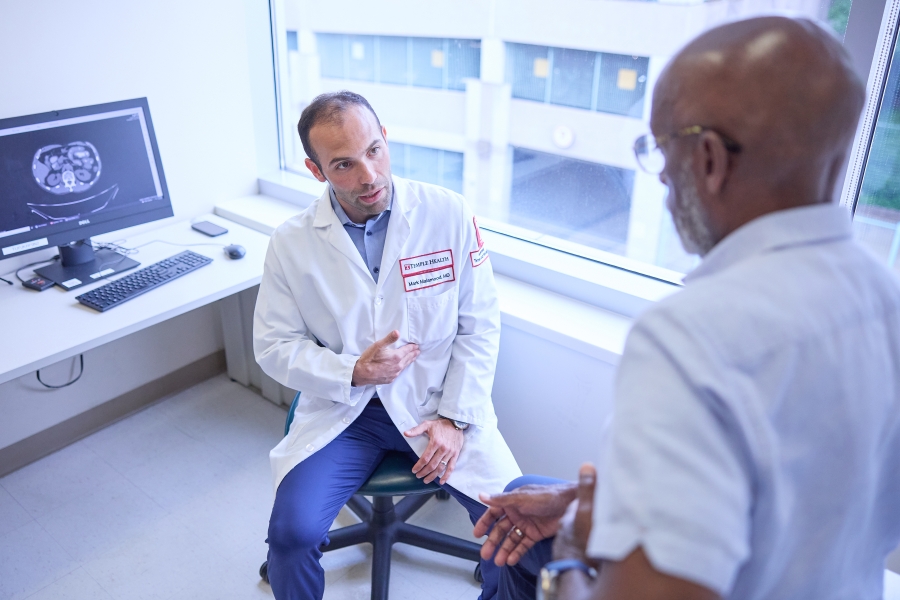Lisa McCown, 43, a waitress at the Golden Dawn diner in Burlington, N.J., liked going to casinos on her day off. Her mother once won $40,000 on a penny slot. This family knows a lot about long odds.
Back in April, Lisa got the flu. After a few days, she couldn’t breathe and told her daughter to call an ambulance. At a local hospital, doctors intubated her, induced a coma, and helicoptered her to Temple University Hospital.
Most people with flu get well in a few days. But in rare cases, like Lisa’s, the immune system inflicts far more damage than the initial flu virus. Her lungs became swollen and inflamed. This condition, Acute Respiratory Distress Syndrome, is often fatal.
Lisa landed in TUH’s 28-bed respiratory intensive care unit, where she was sedated into a coma and given drugs to paralyze her. Any movement consumed the little oxygen in her blood, depriving the brain. Doctors adjusted her ventilator constantly and with extreme care.
“Imagine the inside of her lungs as fragile as wet tissue paper,” said Erin R. Narewski, DO, a pulmonary and critical care doctor at TUH and Assistant Professor of Thoracic Medicine and Surgery at the Lewis Katz School of Medicine at Temple University.
Lisa was strapped into a RotoProne bed, spending most of her time on her stomach, allowing the back of the lungs slightly more room to expand. Doctors also tried ECMO, extracorporeal membrane oxygenation. A tube as thick as her thumb was inserted into Lisa’s groin and carried blood to the machine at her bedside. ECMO exchanged carbon dioxide with oxygen and returned the blood through Lisa’s neck into a vein above her heart. “You can imagine how easy it would be for blood to clot, or for infection to come in, or for one of these cannulas to tear the heart or a vessel,” Dr. Narewski said.
After five days, Lisa developed high fever from infection and ECMO was stopped. Her children, siblings, and mother sat in vigil at her bedside. Lisa’s youngest child, Frankie, 15, held her hand and wept.
After about six weeks, doctors worried that the likelihood of survival was slim, and if Lisa did survive, the chance that she’d ever get off a ventilator, out of bed, or be herself again was slimmer still. “Whenever there’s a patient who is so ill, and has gone so far beyond the point where we can easily imagine a recovery, we get really worried,” Dr. Narewski said. “Is this person going to make it? Am I coming here to help someone and instead causing suffering? No doctor wants that for a patient.”
Doctors thought it was time for Lisa’s family to at least consider stopping all aggressive treatments, letting her die peacefully. It might be enormously painful for a family to hear the truth, especially the family of a 43-year-old woman with teenage children, but Dr. Narewski felt it was important. “If we are not communicating in a respectful, open, honest, and evidence-based way with families about what’s going on,” Dr. Narewski said, “we are doing a grand disservice. If we don’t give them a choice, then they can’t make one.”
